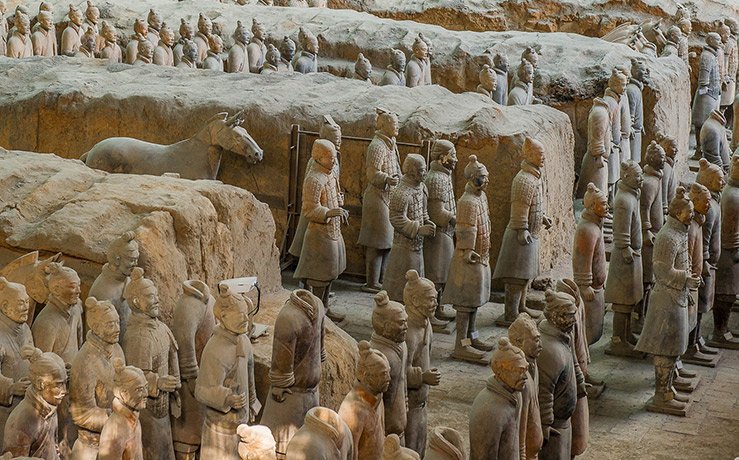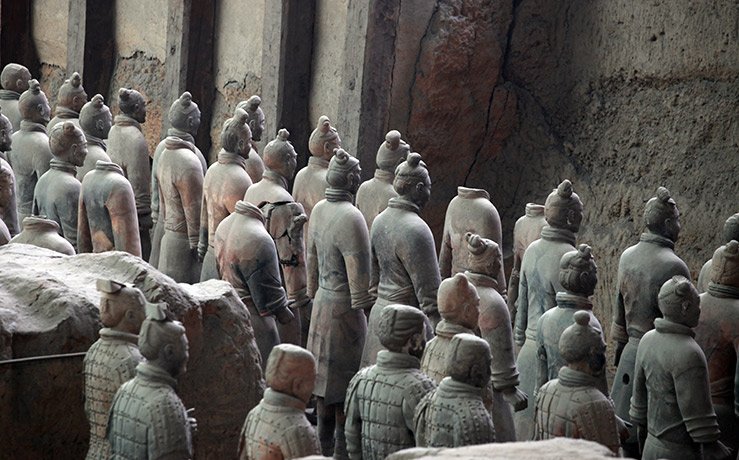The sculptural composition "the Terracotta army of Emperor Qin Shi Huang in several major Chinese tourist attractions, occupies a special place.

If the Great wall of China or the Drum tower, known and studied for a very long time, the terracotta statues in the province of Xian was discovered in historical terms as recently as 1974.
Archaeological excavations in the village of Qinling underway and now, as scientists discover all-new mysteries associated with the unique, the world's largest "graveyard of statues."
Scientists today managed to find 8100 statues of warriors, in baked clay. They are located in three rows on an area of about 16га, a mile from the tomb of Qin Shi Huang, (III century BC), first Emperor and unifier of China. Excavations are carried out under cover of a specially built hangars, where and lead tourists. They have to withstand quite a large place – wanting to see the "eighth wonder of the world" in the Qinling gathers a lot.
The highest skill and amazing technique of making terracotta warriors of the imagination. The main feature of the monument – among the thousands of statues, no two are exactly alike, they have individual facial features, and the ordinary soldier can be easily distinguished from the General or officer. Soldiers have different weapons, however, some of the statues is missing – it is believed that the spears, swords, and halberds used by local residents during the peasant uprising. There are thousands of sculptures of horses. Found and the bronze chariots.


The clay soldiers were made by hand, piece by piece, which is then connected. Terracotta - fired clay, hence the name of the sculpture "army". Statues of warriors were painted, but over time from the long stay under the ground paint is almost completely gone. Only painstaking work of the restorers allows our contemporaries to see the statue in its original livery, quite colourful.


The main question – why it took an enormous work to create a "terracotta army", the exact answer yet. It is assumed that this is an echo of the ancient Chinese tradition of burying the Emperor along with his closest associates, wives, concubines, and soldiers. And since Qin Shi Huang, as it is said, was a unifier, to be buried along with him tens of thousands of these soldiers from all over China has not been possible.


